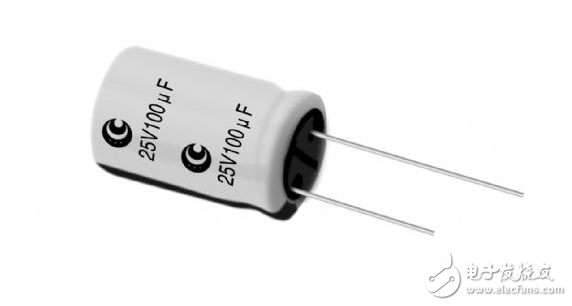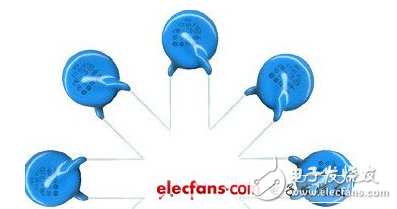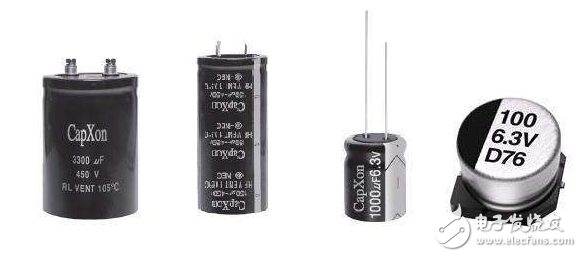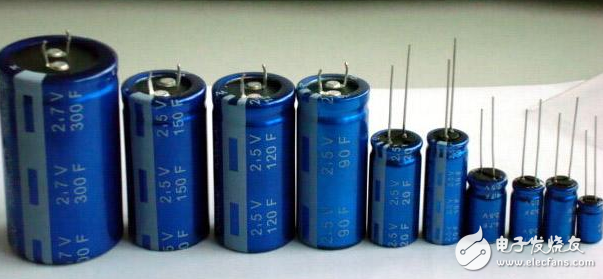Generally, the value of the capacitor satisfies R*C=(3-5)T, where R is the load resistance, which is equal to the ratio of the DC voltage of the DC output to the DC output current; C is the capacity of the filter capacitor; T is the rectification The repetition frequency of the post-pulsating DC voltage. After this selection, it is completely possible to supply power to electronic devices that do not have voltage regulation requirements. This formula is not strictly required to obey. If there is a voltage regulator circuit behind the filter, the filter capacitor takes a small point, but the voltage regulator circuit must be fully functional, and the pressure compensation at both ends is very large. It should be a relatively strong voltage regulation capability. As for the withstand voltage of the filter capacitor, for the half-wave rectification and full-wave rectification circuits, the withstand voltage of the filter capacitor is required to be larger than the maximum value of the input AC voltage of the rectifier circuit.

In electronic circuits, capacitors are used to block DC through AC, as well as to store and discharge charge to act as a filter to smooth out the output ripple signal. Small-capacity capacitors are commonly used in high-frequency circuits such as radios, transmitters, and oscillators. Large-capacity capacitors are often used for filtering and storing charge. There is also a feature, generally more than 1μF capacitors are electrolytic capacitors, and capacitors below 1μF are mostly ceramic capacitors, of course, there are other, such as monolithic capacitors, polyester capacitors, small-capacity mica capacitors. The electrolytic capacitor has an aluminum shell filled with electrolyte and leads two electrodes as positive (+) and negative (-) poles. Unlike other capacitors, their polarity in the circuit cannot be connected incorrectly, while other capacitors No polarity.
Connect the two electrodes of the capacitor to the positive and negative terminals of the power supply. After a while, even if the power is turned off, there will still be residual voltage between the two pins (after learning the tutorial, you can use a multimeter to observe), we say the capacitor The charge is stored. A voltage is established between the plates of the capacitor to accumulate electrical energy. This process is called charging of the capacitor. There is a certain voltage across the charged capacitor. The process in which the charge stored by the capacitor is released into the circuit is called the discharge of the capacitor.

In the electronic circuit, only during the charging process of the capacitor, current flows, and after the charging process is finished, the capacitor cannot pass the direct current, and plays a role of "DC blocking" in the circuit. In the circuit, the capacitor is often used for coupling, bypassing, filtering, etc., all of which utilize the characteristics of "passing AC, DC blocking". So why can AC power pass through capacitors? Let's first take a look at the characteristics of AC. The alternating current is not only reciprocating in direction, but its size is also changing regularly. The capacitor is connected to the AC power source, and the capacitor is continuously charged and discharged, and the charging current and the discharging current which are consistent with the alternating current change law flow in the circuit.
The role of the capacitor in the circuit is mainly as follows:1. Filter capacitor: It is connected between the positive and negative poles of the DC power supply to filter out the unwanted AC components in the DC power supply to smooth the DC power. Generally, large-capacity electrolytic capacitors are often used, and other types of small-capacity capacitors can be simultaneously connected in the circuit to filter out high-frequency alternating current.
2. Decoupling capacitor: Connected between the positive and negative terminals of the amplifier circuit to prevent parasitic oscillation caused by positive feedback formed by the internal resistance of the power supply.
3. Bypass capacitor: In the circuit of AC and DC signals, connect the capacitor to both ends of the resistor or to a common potential from a certain point of the circuit, and set a path for the AC signal or pulse signal to avoid the AC signal component passing. The resistor produces a voltage drop attenuation.
4. Coupling capacitor: In the AC signal processing circuit, it is used to connect the signal source and the signal processing circuit or to make the interstage connection of the two amplifiers, to block the DC, let the AC signal or the pulse signal pass, and make the DC working point of the front and rear stage amplifying circuit Do not affect each other.
5. Tuning Capacitor: Connected to both ends of the oscillating coil of the resonant circuit to play the role of selecting the oscillating frequency.
6. Pad Capacitor: An auxiliary capacitor in series with the main capacitor of the resonant circuit. Adjusting it can make the frequency range of the oscillating signal smaller and significantly increase the oscillating frequency at the low frequency end. By properly selecting the capacity of the pad capacitor, the low-end frequency curve can be raised upwards, close to the ideal frequency tracking curve.
7. Compensation capacitor: It is an auxiliary capacitor connected in parallel with the main capacitor of the resonant circuit. Adjusting this capacitor can expand the frequency range of the oscillating signal.
8. The neutralization capacitor is connected between the base and the emitter of the triode amplifier to form a negative feedback network to suppress self-oscillation caused by the inter-electrode capacitance of the triode.
9. Stabilized capacitor: In the oscillating circuit, it acts as a stable oscillating frequency.
10. Timing capacitor: In the RC time constant circuit, it is connected in series with the resistor R to determine the capacitance of the charging and discharging time.
11. Acceleration capacitor: Connected to the oscillator feedback circuit to accelerate the positive feedback process and increase the amplitude of the oscillating signal.
12. Capacitance reduction: A capacitor that is connected in series to shorten the length of the oscillating inductor in a UHF tuner circuit.
13. Crapp capacitor: In the capacitor three-point oscillator circuit, the capacitor in series with the inductor coil is used to eliminate the effect of transistor junction capacitance on frequency stability.
14. Pot pull capacitor: In the capacitor three-point oscillator circuit, the capacitor connected in parallel with the inductor oscillation coil eliminates the influence of the transistor junction capacitance, making the oscillator easy to start at the high frequency end.
15. Stabilizing capacitor: In the discriminator, used to stabilize the amplitude of the output signal.

Resonant capacitor
16. Pre-emphasis capacitor: In order to avoid the attenuation and loss of the frequency division of the audio modulation signal during processing, the RC high-frequency component is set to increase the network capacitance.
17. De-emphasis capacitor: To restore the original audio signal, it is required to attenuate the high-frequency component and noise boosted by the pre-emphasis in the audio signal, and set the capacitor in the RC network.
18. Phase shift capacitor: A capacitor used to change the phase of an AC signal.
19. Feedback Capacitor: A capacitor that is connected across the input and output of the amplifier to return the output signal to the input.
20. The step-down current limiting capacitor is connected in series in the alternating current circuit, and the capacitive reactance characteristic of the capacitor is used to limit the alternating current, thereby forming a voltage dividing circuit.
twenty one. Reverse-pass capacitor: used for the line scan output circuit, and connected between the collector and emitter of the line output tube to generate high-voltage line scan sawtooth wave reverse pulse, the withstand voltage is generally above 1500V.
twenty two. S correction capacitor: connected in series in the deflection coil loop to correct the extended linear distortion of the edge of the tube.
twenty three. Bootstrap boost capacitor: Use the charge and discharge energy storage characteristics of the capacitor to boost the potential of the circuit at a certain point, so that the potential at this point reaches twice the voltage value of the power supply terminal.
twenty four. Elimination point capacitor: Set in the view-and-discharge circuit to remove the residual bright spot capacitance on the picture tube when shutting down.
25. Soft-start capacitor: It is generally connected to the base of the switching tube of the switching power supply to prevent excessive surge current or excessive peak voltage from being applied to the base of the switching tube when the power is turned on, resulting in damage to the switching tube.
26. Start capacitor: connected in series with the secondary winding of the single-phase motor to provide the motor with a phase-shifted AC voltage. Disconnected from the secondary winding after normal operation of the motor.
27. Operating Capacitor: Connects in series with the secondary winding of the single-phase motor to provide phase-shifted AC current to the secondary winding of the motor. When the motor is in normal operation, it is connected in series with the secondary winding.

Coupling Capacitor: The capacitor used in the coupling circuit is called a coupling capacitor. This type of capacitor circuit is widely used in RC-coupled amplifiers and other capacitive coupling circuits to isolate DC-DC.
Filter Capacitor: A capacitor used in a filter circuit is called a filter capacitor. This capacitor circuit is used in power supply filtering and various filter circuits. The filter capacitor removes signals in a certain frequency band from the total signal.
The decoupling capacitor, the capacitor used in the decoupling circuit is called the decoupling capacitor. This capacitor circuit is used in the DC voltage supply circuit of the multistage amplifier. The decoupling capacitor eliminates the harmful low frequency crossover between each stage amplifier.
High-frequency vibration-absorbing capacitor: The capacitor used in the high-frequency vibration-damping circuit is called the high-frequency vibration-absorbing capacitor. In the audio negative feedback amplifier, in order to eliminate the high-frequency self-excitation that may occur, this capacitor circuit is used to eliminate The high frequency howling that the amplifier may appear.
Resonant Capacitor: Capacitors used in LC resonant circuits are called resonant capacitors, and such capacitor circuits are required in both LC parallel and series resonant circuits.
Bypass capacitor: The capacitor used in the bypass circuit is called bypass capacitor. If the signal in a certain frequency band needs to be removed from the signal in the circuit, the bypass capacitor circuit can be used. According to the frequency of the removed signal, there is a full frequency domain. (All AC signals) Bypass capacitor circuit and high frequency bypass capacitor circuit.
Neutralization Capacitor: The capacitor used in the neutralization circuit is called the neutralization capacitor. In radio high frequency and intermediate frequency amplifiers, TV high frequency amplifiers, this neutralization capacitor circuit is used to eliminate self-excitation.
Timing Capacitor: A capacitor used in a timing circuit is called a timing capacitor. A timing capacitor circuit is used in a circuit that requires time control by capacitor charging and discharging, and the capacitor controls the magnitude of the time constant.
Integral Capacitor: A capacitor used in an integrating circuit is called an integrating capacitor. In a synchronous separation stage circuit for television field scanning, such an integrating capacitance circuit is employed to take out the field sync signal from the line complex sync signal.
Differential Capacitor: A capacitor used in a differential circuit is called a differential capacitor. In order to obtain the apex trigger signal in the flip-flop circuit, the differential capacitance circuit is used to obtain a cusp pulse trigger signal from various types of (mainly rectangular pulse) signals.
Compensation capacitor: The capacitor used in the compensation circuit is called the compensation capacitor. In the bass compensation circuit of the deck, this low-frequency compensation capacitor circuit is used to boost the low-frequency signal in the playback signal. In addition, there is a high-frequency compensation capacitor. Circuit.
Bootstrap Capacitor: The capacitor used in the bootstrap circuit is called the bootstrap capacitor. The commonly used OTL power amplifier output stage circuit uses this bootstrap capacitor circuit to boost the positive half-cycle amplitude of the signal by positive feedback.

Dividing capacitor: The capacitor in the frequency dividing circuit is called the frequency dividing capacitor. In the speaker frequency dividing circuit of the speaker, the frequency dividing capacitor circuit is used to make the high frequency speaker work in the high frequency band, and the intermediate frequency speaker works in the middle frequency band, the low frequency. The speaker works in the low frequency range.
commercial charging station
Shenzhen Hongjiali New Energy Co., Ltd. , https://www.hjlcharger.com